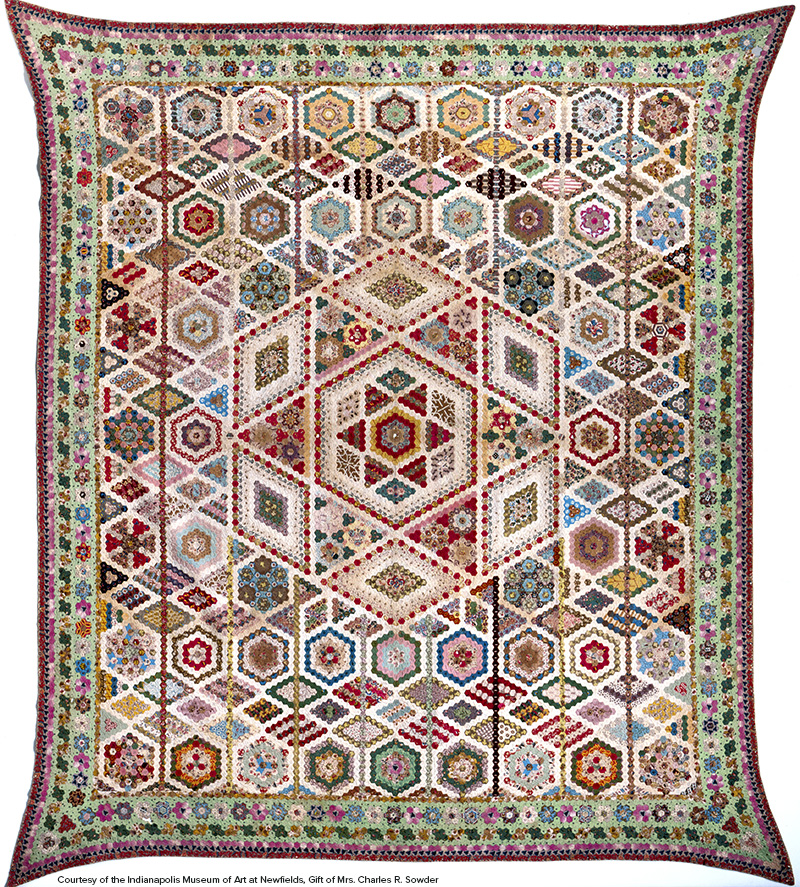Women’s History Month: Celebrating American Quilters
Quilting is an art form that involves sewing together different pieces of fabric to create patterns. Throughout American history, women have used quilting to support political and social causes while helping to heal the nation during times of crises. Women quilters have communicated their views in their quilted pieces, even when they did not have the political power to express themselves fully. Here, btw examines their historical role and contributions.
A Brief History of American Quilting
What comes to mind when you think about the history of quilting? Perhaps you picture women sitting by the fire sewing together pieces for quilts during the Colonial Era. Colonial women rarely quilted, however, because most were too busy with other household chores. By the mid-1800s, quilting became a more popular activity. The invention of the cotton gin, the cotton harvested by enslaved people, the rise of the textile industry, and improvements in shipping meant more fabric was available. These factors decreased the cost of supplies. Designing and making quilts was a way to express creativity when women spent most of their time on domestic duties.
After industrialization, many Americans traveled west. On the frontier, women would gather for all-day quilting events. These gatherings, known as “quilting bees,” allowed women to finish a large quilt in one day by working together. Women at quilting bees often worked around an already partially finished piece, which allowed them to talk as they worked. As time went on, the popularity of quilting bees spread. By the 1900s, quilting bees became an increasingly social and political event.
What is the historical role of quilters?
By the 1830s, women in the North formed anti-slavery organizations. Many abolition fundraisers included the selling of quilts. These quilts featured anti-slavery images and poetry lines. Oral history and storytelling suggest that quilts provided directions or clues to safe houses. Despite the theme of quilts used as a tool for safe passage on the Underground Railroad, there has been little historical evidence to support these narratives. The Civil War became one of the first major conflicts that involved quilters; Union and Confederate women raised money for the troops by selling quilts at fairs.
After the Civil War, quilters promoted the ideas of the Woman’s Christian Temperance Union (WCTU), founded in 1874. The WCTU called for social reforms, including temperance, or avoiding alcohol. Quilters promoted temperance by using the official WCTU colors of blue and white in their pieces. Blue represented water, and white stood for purity.
As women met to quilt, they also spoke openly about wanting voting rights. A leading women’s rights activist and quilter, Susan B. Anthony made her first speeches on political rights at quilting bees as a teenager. By the early 1900s, women’s rights became a frequent topic during quilting bees.

How have quilters contributed during national crises?
Aside from activism, quilters also have used their craft to help people during times of national emergency. During the world wars, women participated in the effort by making quilts for the home front. Using patterns provided by the Red Cross, quilters sold their crafts to raise money. The extra blankets were then sent to troops on the front lines. Remembrance quilts provided comfort to families of fallen soldiers. Memorial quilts honor lives lost during crises.
During the height of the AIDS epidemic in 1987, a large memorial quilt was displayed on the National Mall in Washington, D.C. It initially featured 1,920 panels in 1987, though by 1988 the quilt had expanded to include 8,288 panels. Each panel contained the name of a person who had died from the disease. In 2001, after the September 11, 2001, terrorist attacks, four women created a 30-foot-long quilt stitched to remember the lives lost. This quilt now hangs at the 9/11 Memorial & Museum.
Quilting Promotes Empowerment
Quilting empowers women. They are able express themselves and draw attention to important causes. Quilting also has served as a tool for economic advancement. Quilting gave women an opportunity to become business owners, when this opportunity was otherwise limited in the early 1900s. Many women sold quilting patterns to magazines and started their own businesses. During the civil rights movement, African American women in the South sold quilts to provide for their families as political turmoil caused economic hardship for African American communities.
Quilts also serve as artifacts that help groups recapture lost history. Recently in Detroit, a quilt made by an African American women’s church group was rediscovered. With this discovery, the quilt provided insight into the history and lives of citizens of the historic Black Bottom neighborhood. Black Bottom had been a successful African American business community during the early 1900s. The quilt serves as a modern reminder of the neighbors who were once there thriving together before highway construction destroyed the community.
Quilts continue to comfort and provide voice to communities around the country. Quilting remains as a political, social, and economic craft.
